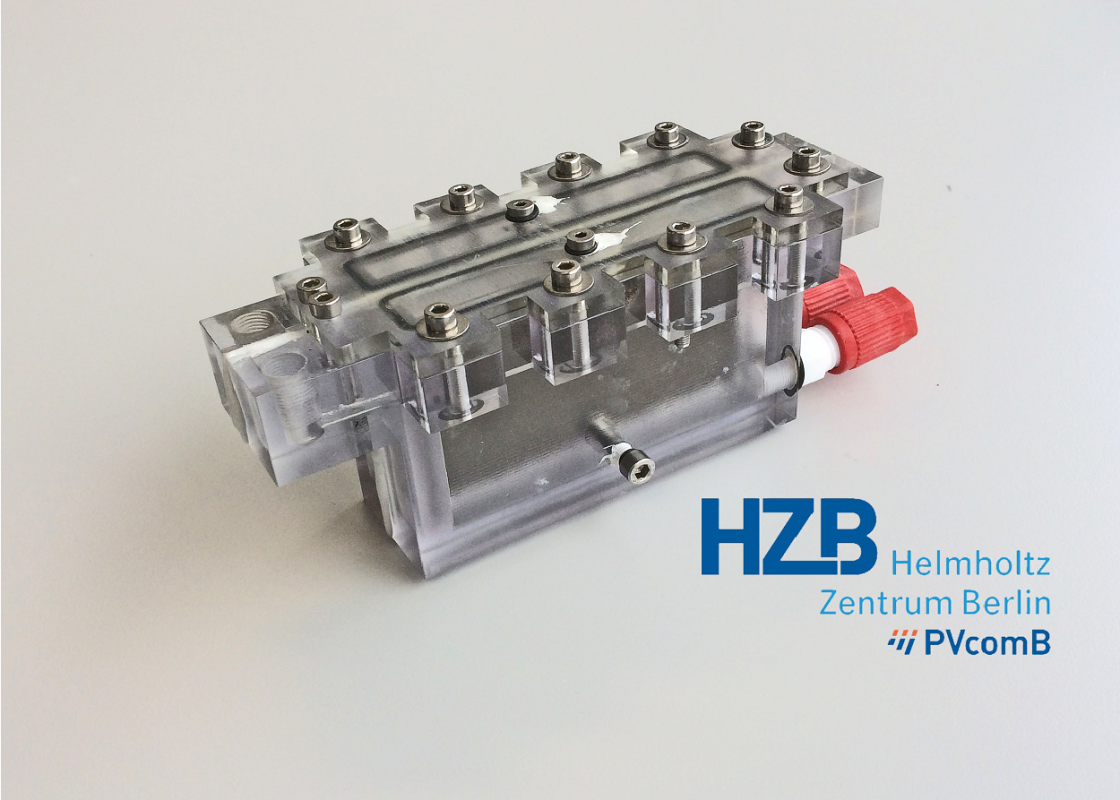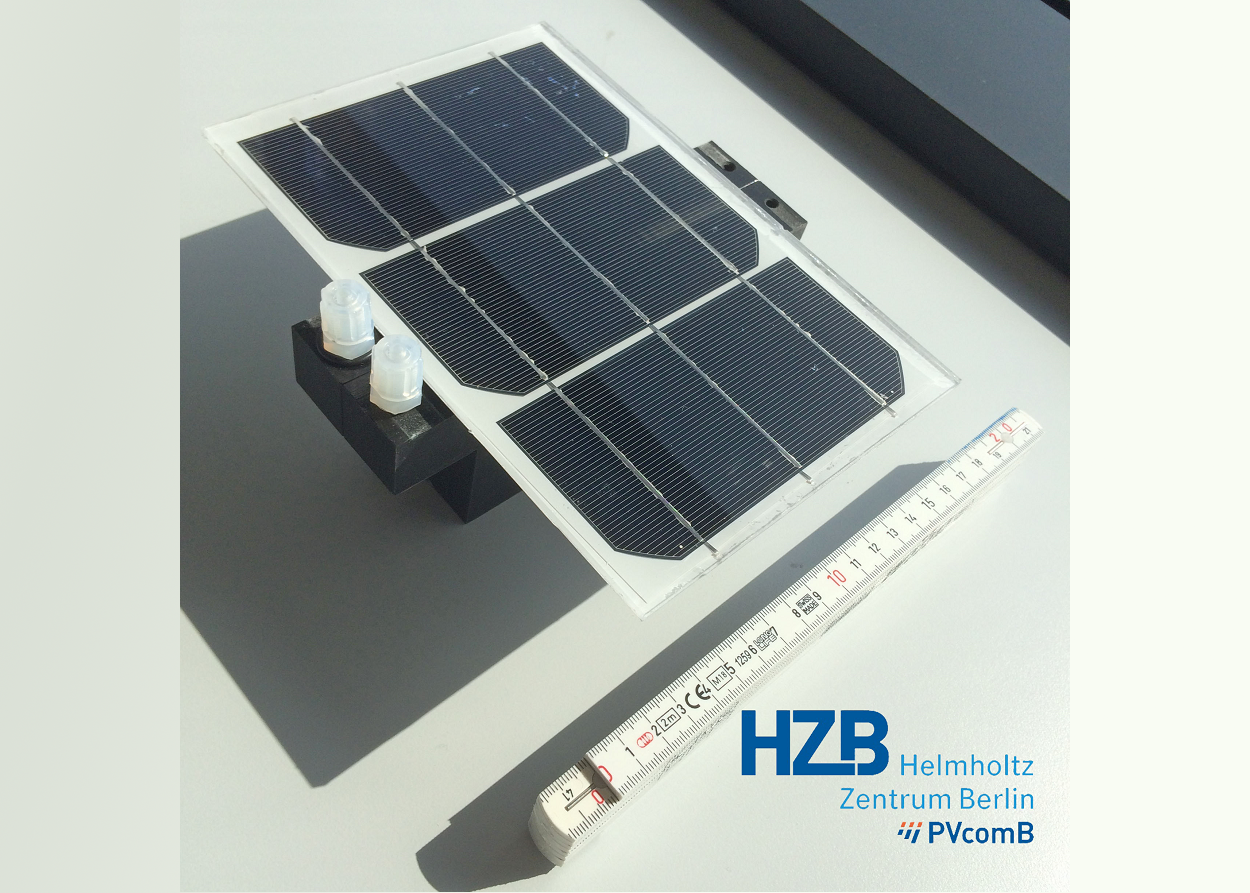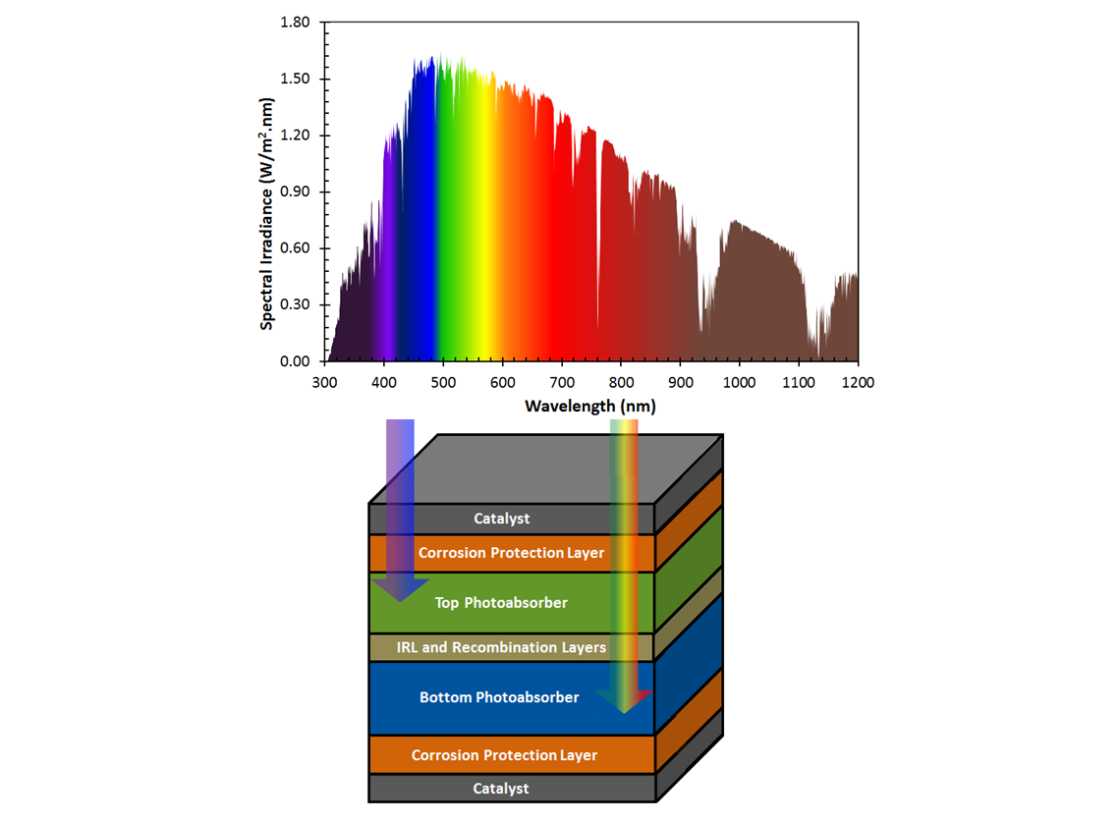PVcomB
Devices
Photovoltaic Integrated Electrolyser (PV-EC ) Prototype Development
- Optimizing the interfaces of the photovoltaics and electrolysis two subsystems to ensure efficient energy transfer for enhanced solar to hydrogen efficiency
- Integration and adaptation of materials and components such as electrodes, flow fields and membranes to the special requirements of solar hydrogen production
- Engineering to ensure long term chemical and mechanical stability of the PV-EC device
Photovoltaic Integrated Electrolyser
Direct coupling is used to integrate photovoltaic modules with an (alkaline) electrolyser cell to generate hydrogen directly from solar energy as shown in the animation
Photovoltaic Integrated Electrolyser
19.24 sDesign and development of new cell concepts for solar water splitting
In tandem photoelectrochemical-photovoltaic cells, each subcell absorbs different portions of incident solar energy and thus making better use of the solar spectrum. Although, tandem cells for solar water splitting boost the low photovoltage from narrow-bandgap absorbers, the photocurrent is still limited by presently available wide-bandgap absorber materials
Layer stack in a tandem photoelectrochemical water splitting cell
Incoming photons are absorbed by the photoelectrodes which generate charge carriers. The middle IRL (internal reflection layer) increases the effective path length of the photons in the top cell. The recombination layer provides a highly conductive contact for transfer of photogenerated charge carriers between the two photoabsorbers. The catalyst layers decrease the activation energy for the water splitting reaction while protection layers extend the lifetime of the photoabsorbers
Principle of operation tandem water splitting PEC
Photons absorbed by each photoabsorber are used to create an electron-hole pair that is separated by the space charge layer to create a photovoltage. The summation of the photovoltage from both photoabsorbers which, should be ≥ 1.23 V, is used to provide the free energy for water splitting. The number of generated (and collected) charge carriers contributes to the photocurrent which in turn determines the rate of hydrogen production
Operation tandem water splitting PEC
18.55 s


